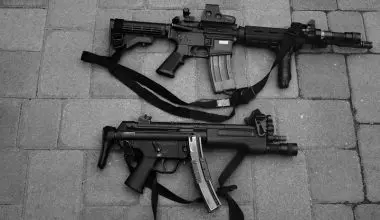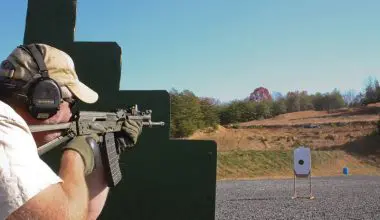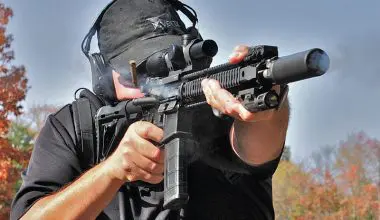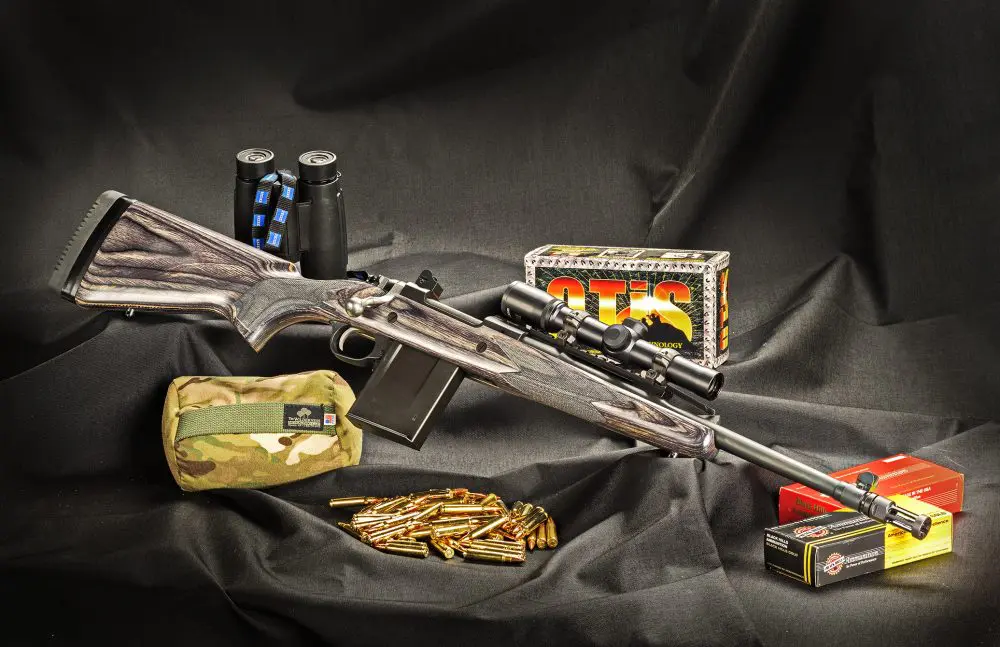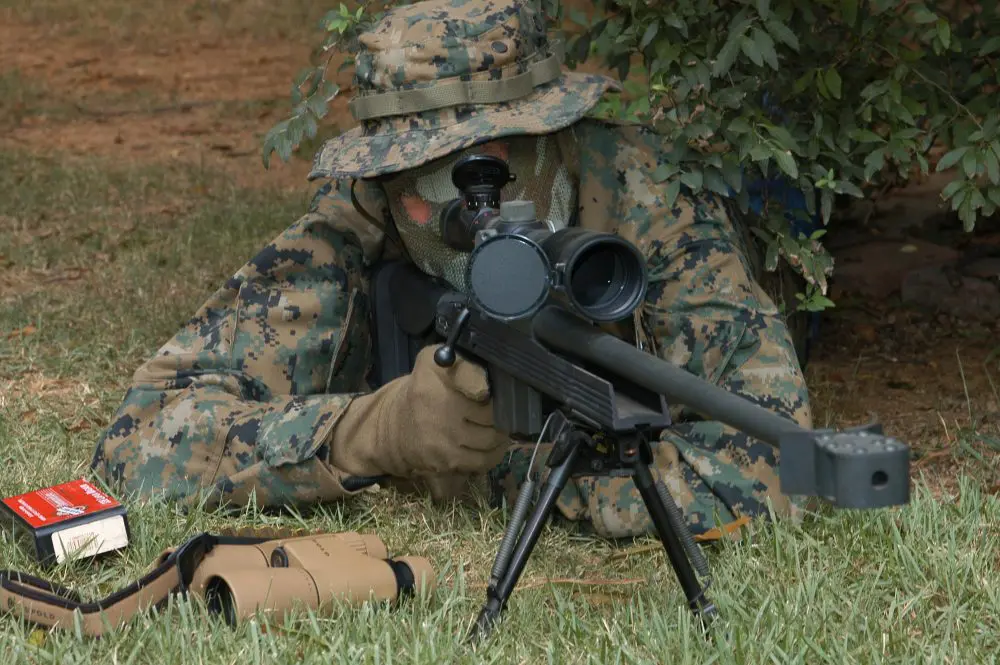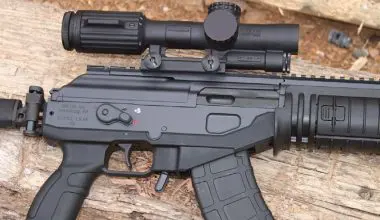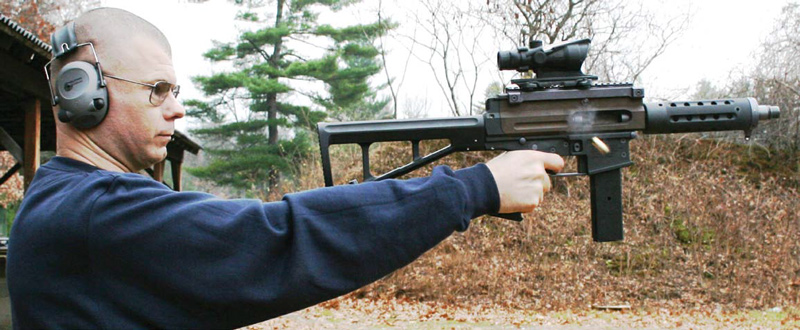
But since most of them are small business entrepreneurs who rely on private funding, they have received scant publicity.
LAR 300 rifle inventor Aldo Zitta, for example, is a Berkshire Boy and after several frustrating years of trying to get the military interested, he eventually sold his unique design to Para Ordnance. Para now successfully markets the LAR as its Tactical Target Rifle. However, that was then and this is now, and my latest trip to the gun-phobic (politically speaking) Bay State exposed me to what could possibly become the military’s new battle carbine.
Tucked away in a small New England town is 3-Ten Corporation, which consists of three brothers—Mike, Matthew and Mark Marcinkiewicz. With almost 50 years of combined experience in the aerospace manufacturing and quality control environments, this trio of selfeducated small-arms designers (who are most noted for the development of specialized ammunition) have, after ten years of private research and development, fielded the unique AR-3-Ten Carbine.
The Generation Three pre-production prototype carbine is recoil operated and thus eliminates the inherent problems related to gas impingement and gas piston designs, especially when operating in ultra-harsh environments. The weapon is designed to meet and exceed current military multi-mission capability requirements.
Table of Contents
RECOIL OPERATED
There are two types of recoil operation, short and long. Both involve a locked breech and use the force of recoil to provide energy to cycle the action. When the bullet and gas accelerate down a firearm’s barrel, a non-recoil operated firearm will move rearward in its entirety. However, in recoil operated systems, only a portion of the firearm is permitted to move in the opposite direction. Parts within the gun are linked together by a spring that is compressed by movement, which serves to return the different parts, i.e. the bolt, to their original position. The 3-Ten is a long recoil firearm.
Since there is minimum momentum required to operate any given recoiloperated firearm’s action, the cartridge must generate sufficient recoil to provide this momentum. Recoil-operated firearms tend to work best when using a cartridge with a mass near where the gun’s action was originally optimized or tuned in terms of momentum. For example, the Government Model 1911 design was optimized for a 230-grain bullet, and, although there is a wide range over which different bullet weights may still operate reliably, the optimal reaction will nonetheless occur around a 230- grain bullet for standard OEM springs.
HEAVY CALIBER, INCREASED LETHALITY
The short fixed skeletonized stock, straight-line carbine reflects the very popular AR-15 platform’s profile, but its resemblance is merely superficial. A further departure from contemporary military weapons development is its return to large-caliber and heavy-weight battle rifle calibers instead of light- to mediumweight high-velocity ammunition. The Marcinkiewicz brothers selected the underappreciated .45 Winchester Magnum cartridge in 260- and 350-grain formats, which achieve modest velocities of 1,250 and 950 feet-per-second (fps) respectively from the submachine-gun length 8.3- inch barrel. Bullet drop at 100 yards for the 260-gr. bullet is approximately 3.00 inches.
The developers, relying on the controversial Taylor Index of Stopping Power, claim that both rounds exceed the muzzle energy of the 168-gr. 7.62x51mm (7.62mm NATO/.308 Winchester) at 100 yards and the 69-gr. 5.56x45mm at all ranges out to 500 yards. When the subsonic 350-gr. is launched either suppressed or unsuppressed, it actually bests the 7.62mm NATO at all ranges.
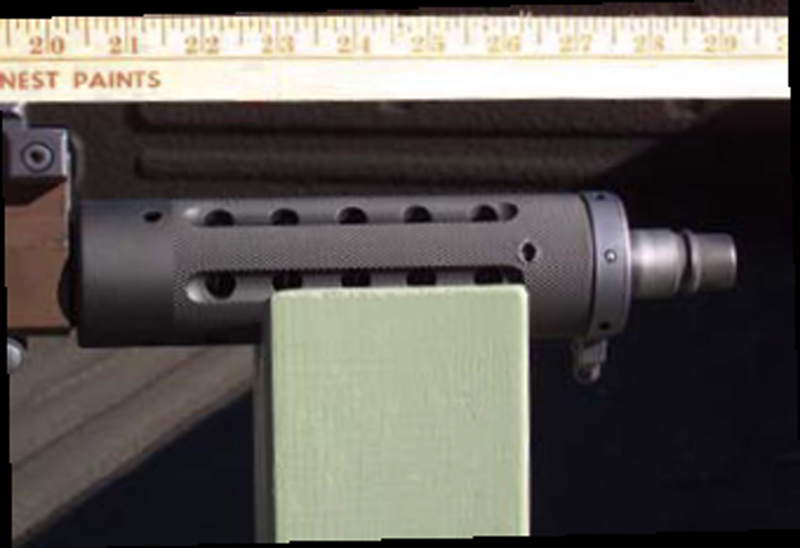
Superior lethality is claimed from 0 to 500 yards with these rounds, and U.S. Civil War data seems to bear this out. With its long-range hit capability, the 3-Ten would obviously mitigate the military’s preference for a family of rifles, carbines and submachine-gun length barrels that enable Special Forces to tailor their weapons for various missions.
DOUBLES AS SHOTGUN
In addition, 3-Ten claims to have eliminated the requirement for the underbarrel shotgun attachment for the M16/ M4 system. The 3-Ten, with its proprietary and reliably functioning Bulleted Shotshell (BS) ammunition, fulfills antipersonnel requirements with simultaneous point and area target engagement. Its 69-gr. hollow configuration projectile at 1,750 fps is augmented with a payload of #6 shot at 1,350 fps and is equivalent to a .410 shotgun shell. Mike Marcinkiewicz claims that for use in door-breaching operations, the 350-gr. FMJ-RN subsonic projectile breaches door locks and hinges. Shotgun performance is therefore achieved by merely switching ammunition.
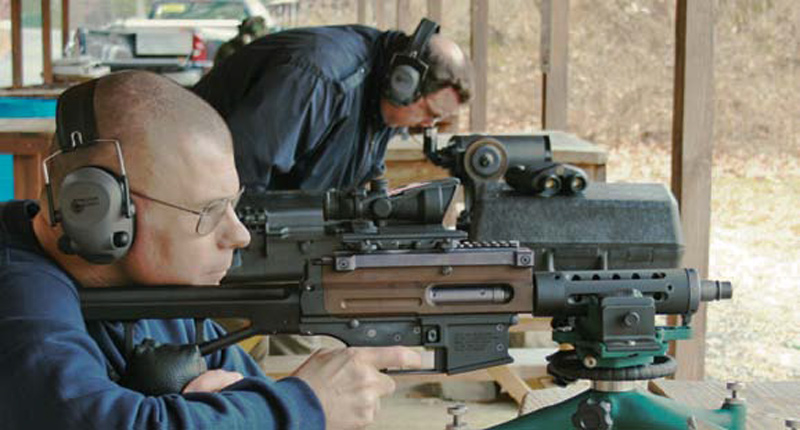
Further recognizing the troops’ preference for compact weapons for vehicle and urban operations—even while sacrificing critical muzzle velocity in 5.56x45mm platforms—the 29-inch overall length carbine is extremely maneuverable and with the shotshell load would be ideal for shipboard CQB, when potential penetration of volatile structures would be catastrophic.
HEAVY BUT RELIABLE
Recoil is low and re-indexing multiple threats is very rapid. Ease of control is influenced by its weight of nine pounds and a proprietary internal recoil mitigation system contained in the receiver and fixed stock, which I was not permitted to see. The weapon is designed to be both battle- and soldier-proof. The very rugged carbine is CNC machined from first class materials that will last indefinitely, are corrosion-proof and require very little maintenance.
Parts and components consist of 6061 T6 aircraft aluminum alloy, 17-4PH stainless steel, 6AL-4V Titanium alloy and 17-7PH stainless steel spring material. Soldiers like our Army Rangers have expressed less concern over weight, but will accommodate it if the weapon is worthy of their trust in the world’s most inhospitable environments.
VERY LOW MAINTENANCE
The carbine’s superstructure is rugged enough to be used as a bone-crushing cudgel or a step for scaling walls and other vertical obstacles. The receiver is locked together with conventional front/ rear takedown pins and has a third locking point via an Allen screw that eliminates any flex or play between the upper and lower of the weapon. Since its innards are rust resistant and lubrication free, Marcinkiewicz advises that the only maintenance required is to periodically swab out the stainless steel alloy barrel from the muzzle end to clean it of deposits left by firing. Marcinkiewicz claims the barrel will not lead and the system is reliable with all types of ammunition.
Its rust resistance should interest waterborne commandos. The 3-Ten can be swum with and then dragged over a sandy beach without the necessity of waterproofing. While it is not set up for bayonet use (U.S. Marine essential), its Universal Upper Receiver quickly interchanges from a flat-top receiver to an innovative carrying handle that incorporates front and rear adjustable iron sights. The handle also accommodates a primary optic with the irons relegated to back-up sights. Alternately, the handle can be jettisoned and any glass can be mounted on the Picatinny Rail.
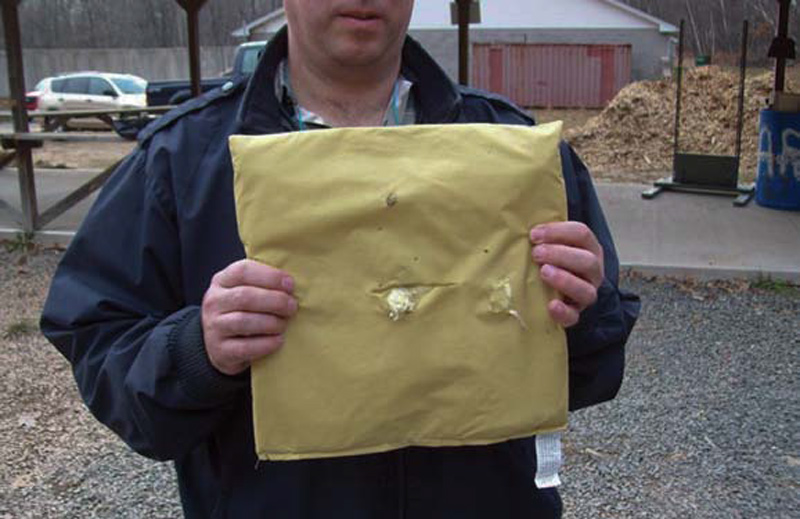
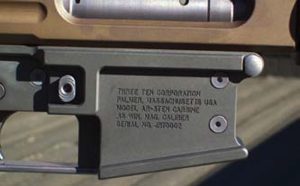
SOUND SUPPRESSOR
Other interesting features include an “indexable front sling swivel” that rotates a full 360 degrees to comply with the end user’s preferences for carry mode. The non-reciprocating port-sidemounted charging handle permits functioning without removing the carbine from one’s shoulder and can be easily slapped with gloved hands. Southpaws merely need to rotate the gun inboard and come over the top with the blade edge of the hand to manipulate. An enlarged cold-weather trigger guard can be further removed for Arctic mittenclad hands.
For clandestine capers, a no-maintenance snap-on, snap-off SRS sound suppressor is included in the ensemble. When teamed up with the 350-gr. subsonic round, ballistic crack is eliminated and muzzle report greatly reduced. With or without the suppressor, smoke, flash and thermal signatures are virtually undetectable. Everything described above is packed in a convenient and heavily padded hard carrying case.
SEMIAUTOMATIC ONLY
At this juncture, the AR-3-Ten’s feed system consists of a 15-round, double stacked and single feed aluminum magazine. In the future, the straight stick will be increased to 20 “stored kills.”
The two versions I saw and fired were semiautomatic only. Select-fire (full automatic) capability is not envisioned at this time unless cyclic rate can be substantially reduced. Select-fire versions of the M14 were virtually uncontrollable, and a handheld bullet hose launching a fusillade of heavy “thumpers” would be climbing all over the horizon. However, many similarly weighted Thompson SMGs were capped with Cutt’s compensators, and short bursts of 230-gr. fodder at 230 fps were effective in trained hands. Contemporary compensators may be able to solve this problem.
FIELD PERFORMANCE
With a 4X32 Trijicon ACOG mounted on the rail, we whacked humanoid targets at 300 yards with the 260-gr. round from a handheld shoulder-fired rest. Expectedly, projectile time of flight was less than instantaneous, but fast enough to tag a walking target with minimal lead. To demonstrate control, Mike fired the 3-Ten one handed from the hip and off hand.
At closer ranges, we shattered large gourds to illustrate energy dump and patterned the BS at ten yards against targets backed by ½-inch plywood. The lightweight bullet was centered in the shot pattern, but a few inches low. A 24- inch pattern as well as the bullet shredded the wood backing. Recoil was almost non-existent and the carbine functioned perfectly. I also fired 3-Ten’s .45 ACP BS into similar targets at 10 and 25 yards from my Springfield Armory XD pistol. Again, function was 100% and patterns effectively blanketed humanoid targets at both ranges.
A 12×12-inch sample of Level IIIA body armor was taped to a 2×12” plank and the 350-gr. load was fired at it through the SRS suppressor. The heavy bullet failed to compromise the soft vest material, but left a fist-sized depression in the board and fractured it with blunt trauma. A second shot with a higher velocity 260-grainer completely penetrated the soft armor and the board. As expected, the LIIIA sample will protect against the BS round.
One of the problems with our 5.56mm round is lack of hard target penetration in urban warfare. The obstacle may be breached, but residual kinetic energy may be so low that the enemy may still enjoy protection. Well, concrete blocks are not safe from the .45 Win Mag, and Mike busted them at 15 yards with the 260-gr. pill. If that doesn’t make you happy, Marcinkiewicz further advised that the 3-Ten can be upscaled to any caliber including .338 Lapua Magnum.
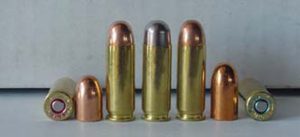
NEW ARMY CARBINE
In September 2010, the U.S. Army unofficially announced its quest for its “next generation carbine, the future Army weapon for any environment.” There will be no caliber restriction and it must be:
- Reliable, accurate, durable, easy to use and easy to maintain in the field.
- A 500-meter weapon, with a higher incapacitation percentage than current rifle calibers, meaning “if it doesn’t kill the enemy, it will put a serious dent in his medical record.”
- Lethality must be defined from the end-user perspective.
- It will be modular and capable of attaching all existing accessories that soldiers use.
- It can be either gas impingement or gas piston design.
- Barrels of interchangeable lengths are desirable, but not a must-have feature.
- Manufacturers’ claims will be tested and weapons will be tested to their destruction point.
- Weapons’ life-cycle accuracy will be evaluated as carbines age.
- All test aspects will involve individual soldiers and units to “focus on what soldiers really care about— when he pulls the trigger, it fires in a reliable fashion, and what he aims at, he hits.”
A new weapon “could be selected by the end of 2011.”
CONCLUSIONS
Unless the military modifies or adds factors to their current criteria, as they are apt to do when the program matures, the AR-3-Ten carbine meets or exceeds many of these requirements. While its recoil action is a departure from the two specified, the military may come to realize that with it, they can avoid many of the contamination and wear problems attendant with gas systems.
Although in many ways it replicates the M14 that I carried without complaint during my first Vietnam tour, the 3-Ten’s go-to-war weight, especially when tricked out with all manner of optics, lights and lasers and stoked with 20 true thumpers, may be cause for concern and will probably have General SLA Marshal groaning in his grave.
The basic load for the Vietnam-era M14 was 120 rounds, and Marine grunts pretty much adhered to that dictate. But, when the M16A1 came along, troops started packing up to 400 rounds for fire sustainability, particularly when the chance of being isolated was high and resupply was frequently interrupted by the enemy or weather. This ammohumping trend continues today and has proven its worth in both current conflicts.
While I do not doubt the .45 Winchester Magnum’s efficacy, logistical concerns may become an overriding factor. The 3-Ten is not cheap, but I believe it will be in line with current weapons expenditures. In addition, when it comes to a soldier’s personal weapons, I believe no expense should be spared.
